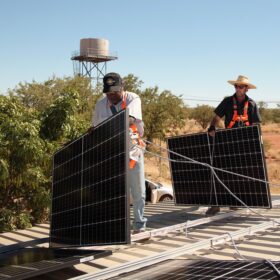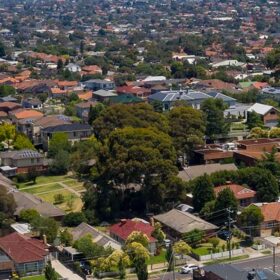Dr Yogendra Vashishtha, Head of Future Networks at EA Technology Australia, said the severe storms forecast across Queensland along with the increasing frequency of extreme weather events in Australia will be another validation of the need to “Assign a Value to Network Resilience”, what the Australian Energy Regulator (AER) and Australian Energy Market Commission (AEMC) are focusing on so that appropriate investments can enhance network resilience against extreme weather events.
While the extraordinary growth in the DER/CER such as rooftop solar, home batteries and electric vehicles pose a challenge to manage (minimum demand, reverse power flows), these resources can be part of the solution (stand alone power systems) in maintaining continuity of supply, safety, and system security.
“Grid-edge visibility and distributed intelligence is now a frontline defence against extreme weather,” said Dr Vashishtha.
“When Distributed Network Service Providers (DNSPs) can see what’s happening in real time, they can isolate faults faster, reconfigure the network, and keep electricity flowing safely. Without visibility of the network, every extreme weather condition increases the risk of outages and longer delays in restoring power to communities.”
There are over 2.2 million customers connected in Queensland in the National Electricity Market which is part of Australia’s grid that spans over one million kilometres. About 80% of the country’s distribution infrastructure is above ground with pole-mounted substations dominating regional areas which can be affected by severe storms and wind conditions. This makes monitoring and visibility even more critical for resilience and energy security.
A rule by the Australian Energy Market Commission for Victorian DNSPs highlights how regulators are starting to support new resilience expenditure factors when proposing and assessing capital and operating expenditures. Aimed at enhancing network resilience, this is an example on how formal Network Resilience Guidelines can deliver greater energy security for energy consumers.
EA Technology’s VisNet technology brings together two innovations, the VisNet Hub and VisNet View, to deliver visibility and intelligence at the grid edge. The VisNet Hub is a proven technology widely deployed in one-fifth of the United Kingdom, providing LV network insights that help DNSPs manage growing system stress.
Dr Vashishtha added that the majority of Australia’s LV networks were historically not monitored due to cost.
He added, “Advanced monitoring tools such as the VisNet Hub and VisNet View from EA Technology can provide real time data at the LV circuit level which can help under extreme weather extreme disturbances and keep the communities powered during storms. This will also help detect pre-faults in low voltage cables to detect faults before major outages occur.”






By submitting this form you agree to pv magazine using your data for the purposes of publishing your comment.
Your personal data will only be disclosed or otherwise transmitted to third parties for the purposes of spam filtering or if this is necessary for technical maintenance of the website. Any other transfer to third parties will not take place unless this is justified on the basis of applicable data protection regulations or if pv magazine is legally obliged to do so.
You may revoke this consent at any time with effect for the future, in which case your personal data will be deleted immediately. Otherwise, your data will be deleted if pv magazine has processed your request or the purpose of data storage is fulfilled.
Further information on data privacy can be found in our Data Protection Policy.